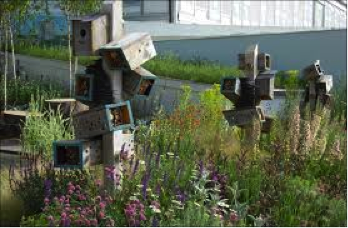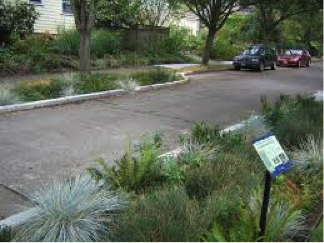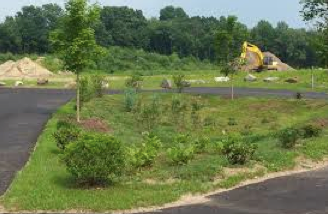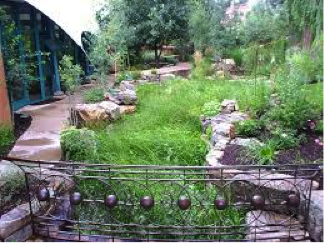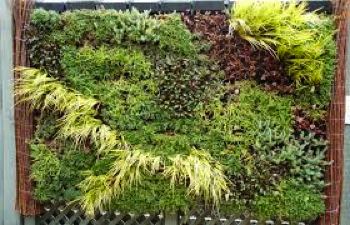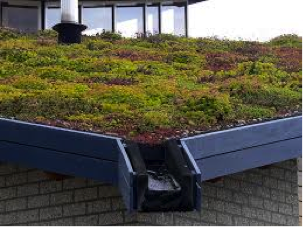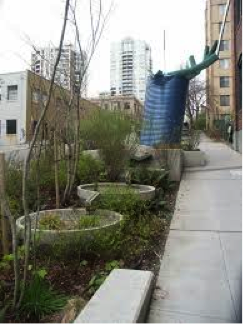Art and Stormwater Water Management
Green Infrastructure (GI) is an emerging field that marries practical and functional stormwater management often with an artful and environmentally sensitive approach that makes it more sustainable than traditional BMP while making it more aesthetically pleasing. Where traditional BMP are often termed as “Gray Infrastructure” and allows for little creativity and is pipe and gravel intensive. The GI approach does not disregard traditional BMP as its tools are still of value in situations where Green Infrastructure is infeasible due to space or other considerations. The difference between GI, ARD and LID is that this approach takes on a more creative aspect integrating artistic values into practical facilities. The restoration, rehabilitation and enhancement of natural systems are key elements to the success of GI. ARD really brings focus on the integrations of artistic elements into the mix.
Borrowing from the book Artful Rainwater Design by Stuart Echols an Eliza Pennypacker, two general components of ARD help define goals for the management of stormwater: Amenity and Utility. While each of these has specific goals the outcomes of facilities utilized may be multipurpose. ‘Amenity’ refers to Education, Recreation, Safety, Public Relations and Aesthetic Richness. ‘Utility’ refers to Reduction of pollutant loads, Reduction of damage from runoff and erosion, Safely moving, controlling and containing water, Capture and Reuse for landscape and other uses, Restore and Create Habitat – plant, wetland and wildlife.
In the Mountain Environment, it is important to remember that management pertains to two types of stormwater. In our region our water management issues are two fold; one, the bulk of our precipitation and water supply comes in the form of snow – usually lots of it – typically between the months of October and March which is often supplemented by spring rains and two, flashy summer afternoon monsoon driven thunderstorms that can deliver very large quantities and create temporary flooding in a very short amount of time. Winter snows will generally melt rapidly as the spring warms picking up loose sediment and road sands with the potential for seriously degrading the water quality and habitats of our lakes and waterways.
Up until recently the solution to this problem has been to turn to piping and diverting water to cobble lined swales and retention ponds or gravel filled drywells and infiltration trenches. How much grayer can you get? The on good thing about this practice is that it attempts to keep stormwater on site rather than let it run into drainage systems that deposit into sewer systems or local water bodies.
I have always believed, and tried to encourage co-consultants, that there are more aesthetically pleasing and just as functional ways to manage water than typical Best Management Practices (BMP) practices. I scoff at the term “Best”.
Green infrastructure provides us with the opportunity to not only restore natural systems and create new habitat, it also give us latitude to imbue creativity, yes and even art, into solutions that would normally be devoid of such.
For a few examples:
A retention basin becomes a Rain Garden
Rain Gardens become homes for unique artwork and bird habitat
Curb and Gutter becomes a Vegetated Flow Splitter with Interpretive elements
Rock-lined swales and basins become Bioretention Swales or Basins
Bioretention areas take on a little more character
Walls and Roofs turn Green
Raingutters and cisterns become works of art



